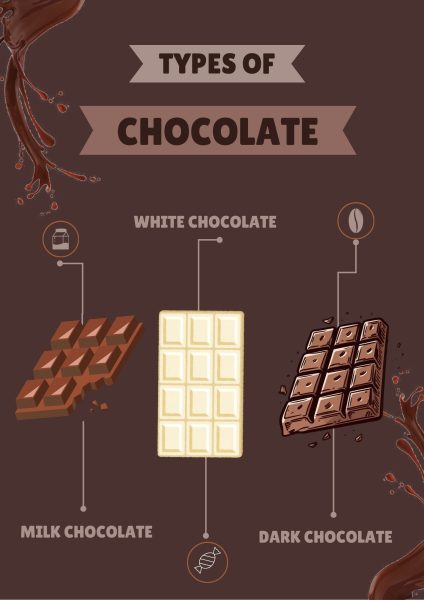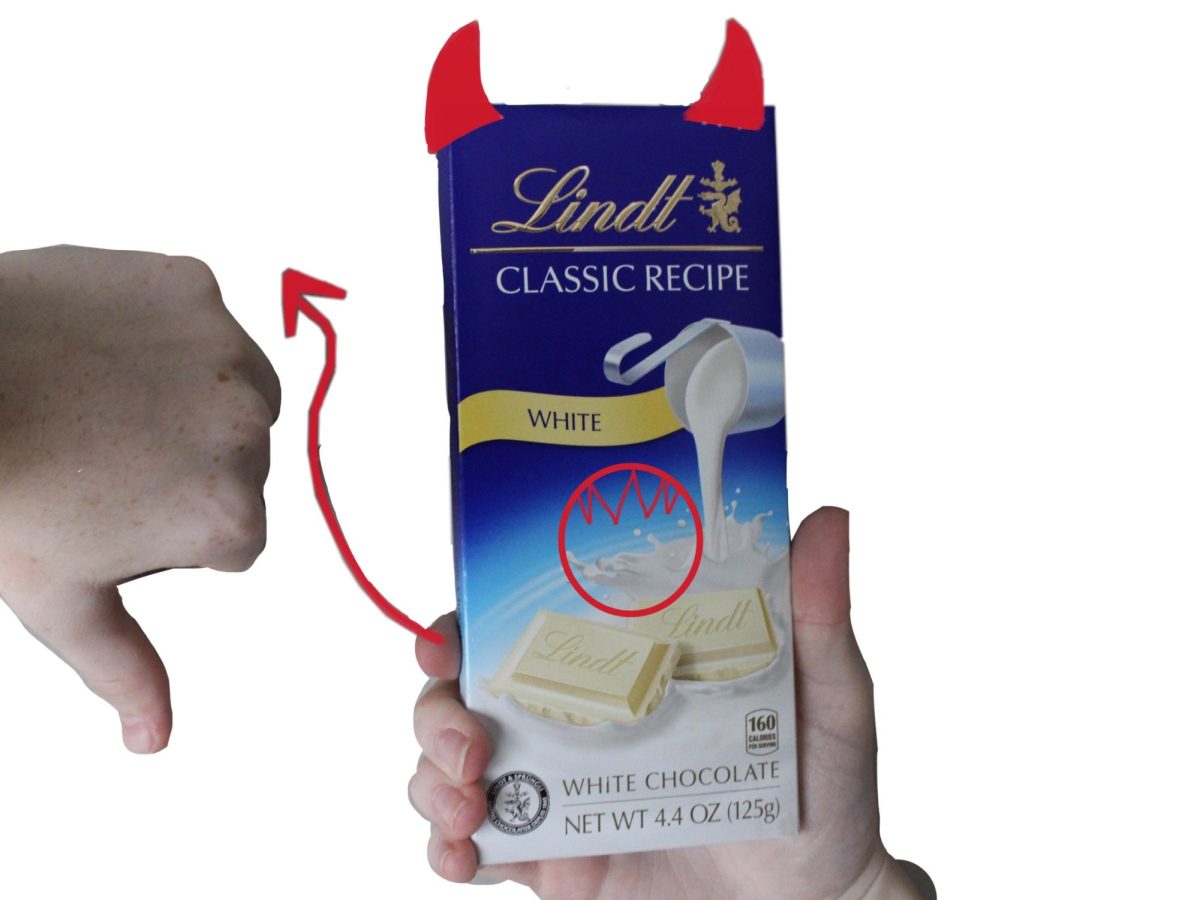Chocolate, historically considered a food of the gods, has represented wealth and elite status for centuries. Its backstory stretches to Central and South America, the locations that mark chocolate’s first creations from cacao seeds. Chocolate mainly falls into three varieties: dark, milk and white, though predominantly produced in the first two variations. As Nestlé experimented with nicer coating flavors for children’s medication in the 1930s, white chocolate arose out of production. Due to white chocolate’s ingredients, absence of benefits and lack of flavor, it can not fully fall under the category of real chocolate.
“My favorite kind of chocolate is milk chocolate because it has the best flavor, and dark chocolate is bitter but white chocolate does not have enough of the bitter chocolate flavor. It’s the cacao flavor that is most prevalent in milk chocolate. White chocolate lacks flavor and it tastes extremely sweet. Milk chocolate and dark chocolate have a more subtle and nicer flavor,” magnet sophomore Anyanna Ekpechi said.
According to the U.S. Food and Drug Administration (FDA), in order for a treat to fall under the category of white chocolate, it needs to contain at least 20% cocoa butter, 14% milk and less than 55% sugar. Meanwhile, milk chocolate requires at least 10% chocolate liquor and 12% milk, and dark chocolate requires at least 15% chocolate liquor, though it contains closer to 50% on average.

White chocolate does not contain any cacao solids, which causes chocolate’s brown color and rich flavors. In addition, cacao solids store the candy’s carbohydrates, minerals and proteins. Meanwhile, white chocolate lacks almost the entirety of what causes consumers to consider chocolate, chocolate. Although the law considers this food part of this cocoa-flavored category, people do not agree.
“My favorite kind of chocolate is dark chocolate because it has a rich and authentic flavor. I also believe it is healthier than white or milk chocolate. It feels less processed and more real, and I enjoy the crunch. White chocolate leaves a bad aftertaste and it’s not even considered chocolate. It doesn’t have enough cocoa,” magnet sophomore Luisa Wagner said.
Unlike white chocolate, dark chocolate can lower blood pressure, improve heart health and provide a rich source of antioxidants. Dark chocolate contains high levels of fiber, iron, magnesium and potassium — nutrients crucial for survival. This treat consists of ingredients that contain flavonoids, which stimulate nitric acid production. Nitric acid sends signals for arteries to relax, which increases blood flow and reduces blood pressure. In contrast, white chocolate does not contain the same ingredients, which means that white chocolate lacks the health benefits of dark chocolate.
Consumers may argue that the flavor and look of white chocolate serve as proof of its name. A rectangular bar with outlines of squares usually represents chocolate to consumers, no matter the color or ingredients. Such images may serve as false proof of the type of candy included in the packaging. In reality, marketing purposefully uses deceitful imagery and phrasing to force this candy under the chocolate brand. When white chocolate does not match the FDA’s standard, companies place images and text that encourage consumers to believe that the product falls under the category of white chocolate. For example, companies use wording such as candy coating instead of white chocolate to avoid lawsuits of false advertising. Companies place pictures of white chocolate bars on their packaging to lead consumers to the belief that this candy can be classified as white chocolate.
Overall, white chocolate should not fall under the same categories as milk or dark chocolate. White chocolate lacks cacao solids and uses cacao butter in its place. This lack of cacao solids contributes to white chocolate’s less natural and overly sweet flavor. White chocolate’s insufficiency of benefits when compared to its darker counterpart causes the milky sweet to lose the label as chocolate.










